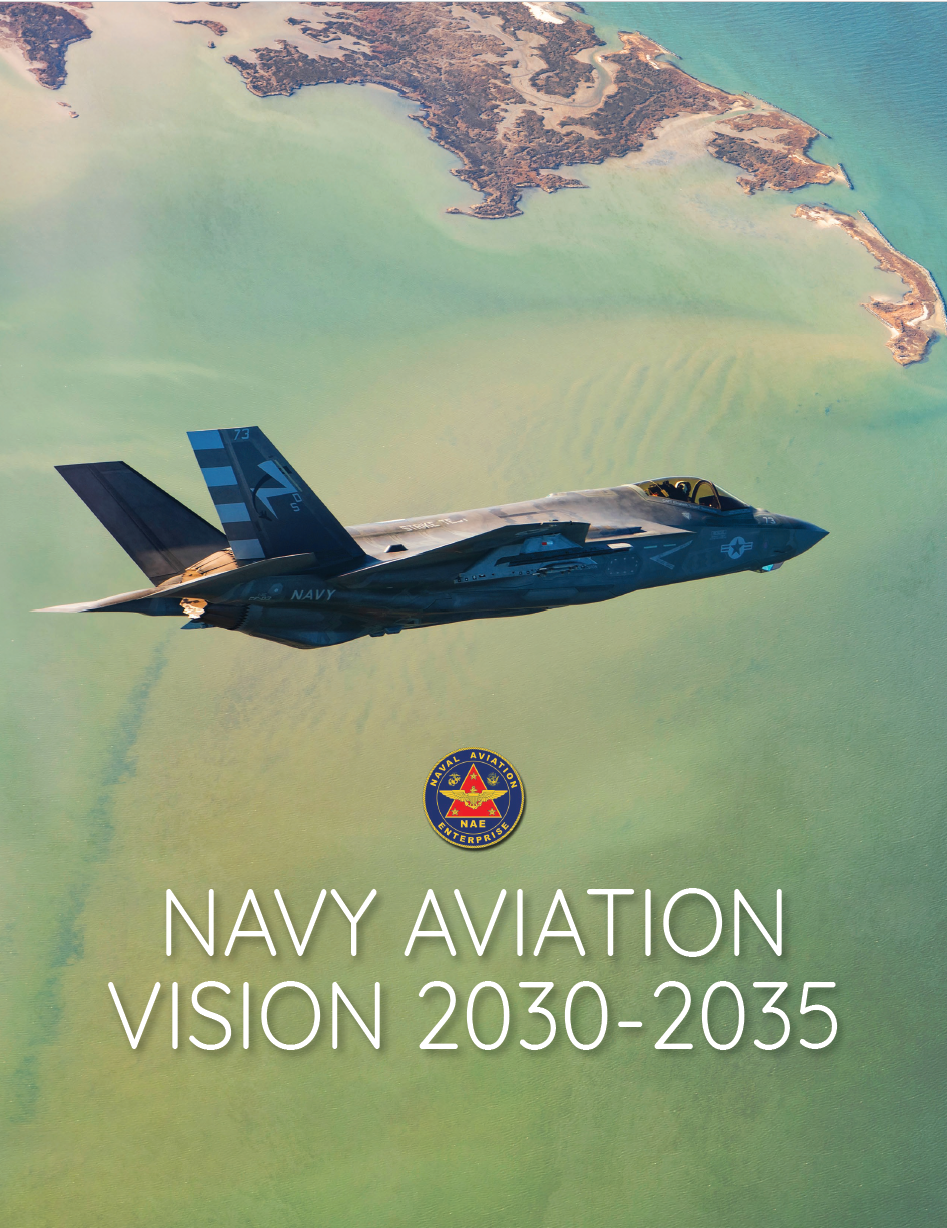Published recently, the Navy Aviation Vision 2030-2035 provides strategic guidance for the U.S. Naval Aviation Enterprise (NAE). It supports the “[Chief of Naval Operations’] vision of a Navy that swarms the sea, delivering synchronized lethal and non-lethal efforts from near and far, on every axis and in every domain” (NAE, 2021, p. 2). The guidance emphasizes prevailing the Great Power Competition, generating future readiness, and revolutionizing training as key to the NAE’s future.
The Navy Aviation Vision 2030-2035 further identifies technology focus areas essential to achieving the objectives. As described in the Future Technologies section, key technologies for research, development, and deployment include:
- Radio Frequency (RF) and Infrared (IR) signature reduction technologies
- Enhanced passive and active kill chains
- Manned/unmanned teaming (MUM-T)
- MUM-T reduces risk to the manned aircraft resident within the CVW, while simultaneously increasing capability, capacity, and survivability. Unmanned Air Systems (UAS) will fill diverse roles in the future air wing and the distributed surface Fleet in missions such as refueling, communications relay, logistics, airborne electronic attack, strike, and [Intelligence, Surveillance, Reconnaissance and Targeting (ISR&T)].
- The MQ-25 will be the Navy’s first aircraft carrier-based unmanned platform and will increase the lethality and reach of the [carrier air wing] as a tanker with a secondary [Intelligence, Surveillance, and Reconnaissance] role.
- The MQ-4C Triton achieved Early Operational Capability (EOC) in January 2020, delivering persistent maritime ISR&T through human-machine and autonomous teaming. It is on schedule to achieve Initial Operational Capability (IOC) in 2023. When paired with mission management tools, such as Minotaur with IFC 4 Multi-INT configuration, Triton will provide sensor agility to locate, track, classify, identify, and report on targets of interest.
- The MQ-8C Fire Scout unmanned aerial system will deploy for the first time in the near future with an advanced RADAR, Link 16, and the Minotaur mission system.
- Materiel and non-materiel solutions are being advanced to enhance interoperability between the MQ-8, MH-60, and Littoral Combat Ship. Incorporation of Link 16 messaging—as well as integration of Minotaur—will increase organic targeting capabilities for the distributed surface Fleet and improve battlespace awareness.
- Increased speed and range – Propulsion solutions that provide increased speed, range, and endurance while simultaneously providing power and cooling to advanced mission systems (i.e., variable cycle engines).
- Long-range, high-capacity, and hypersonic weapons – Next generation weapons must not only extend the air-to-air and surface-to-air reach, but also defeat both maneuvering air targets and surface-to-air defenses. This can be accomplished through increased kinematics (i.e., hypersonic) and/or other disruptive technologies such as directed energy weapons.
- Decreased decision-making timelines – Drive simplicity into tactics by incorporating automation, optimal crew vehicle interfaces, and teamed manned/unmanned forces that exploit Artificial Intelligence (AI) and Machine Learning (ML).
- Electromagnetic Maneuver Warfare (EMW) capabilities – The ability to counter enemy kill chains and air defense systems.
- Cyber capabilities – The ability to counter enemy cyber effects while enhancing cyber capabilities and platforms.
- Advanced networks – A Naval Tactical Grid (NTG) that is resilient with survivable waveforms.
- FORD Class aircraft carriers – Designed to support these and other technologies well into the future (NAE, 2021, pp. 6-7).
In addition to the details in the Navy Aviation Vision 2030-2035, the Naval Air Warfare Center Training Systems Division 2021 Research Compendium offers insights into R&D work being done in training, human performance, and modeling and simulation by the NAE. Check out SLAMR’s Science and Technology (S&T) information store for additional S&T guidance.
Source: Naval Aviation Enterprise (NAE). (2021, October). Naval Aviation Vision 2020-2035.


